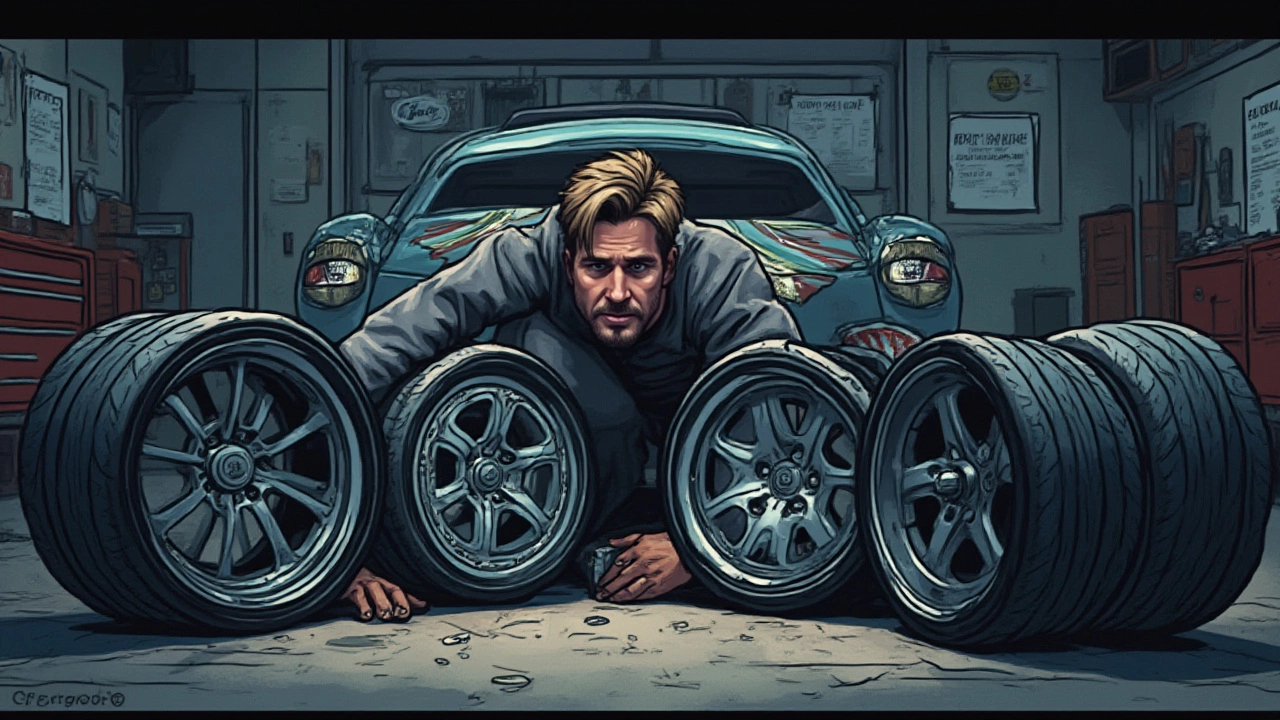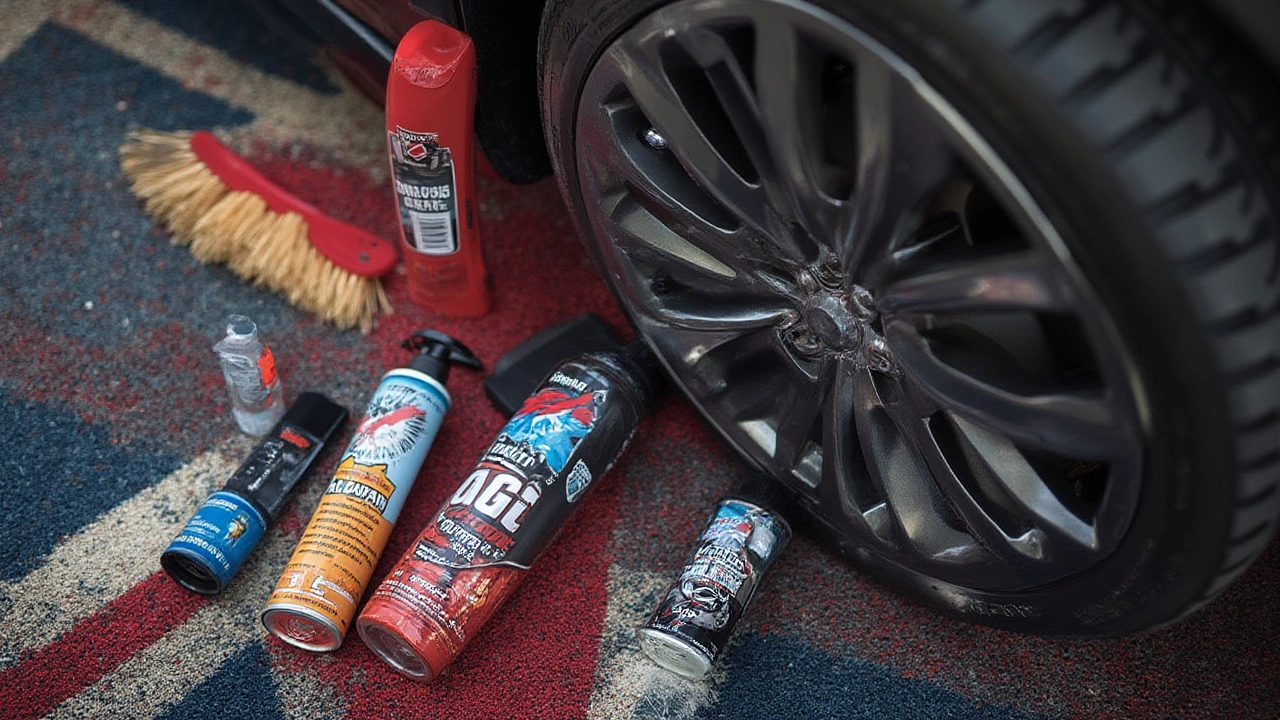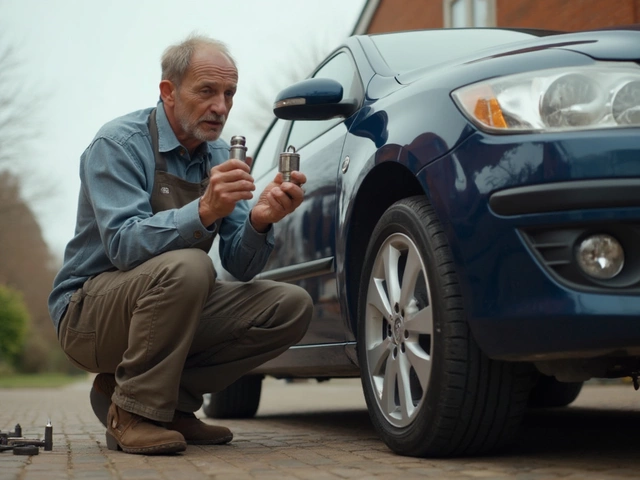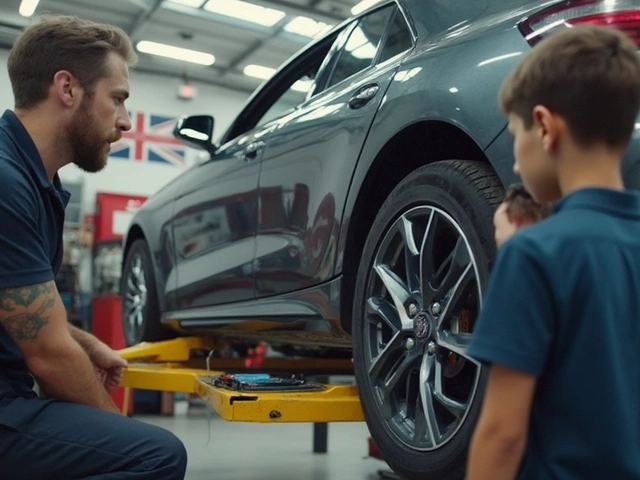Think alloy wheels are all about good looks and smooth rides? It’s easy to get caught up in the shine and style, but there’s a whole lot more going on under that polished surface. From hidden cost traps to nagging little problems, the side effects of alloy wheels are real and worth knowing about. If you’ve ever stood in a tire shop, staring at those silver spokes and wondering if they’re really as perfect as everyone says, you’re in the right place. The truth is, for every sleek advantage, there’s a tradeoff lurking. Let’s get real about what you’re signing up for when you swap out factory wheels for alloys.
The Good, the Bad, and the Price Tag
Alloy wheels are like the fancy running shoes of the car world. They look incredible and they can make your ride lighter and handle better. Most are made from a mix of aluminum and other metals, which means they’re up to 30% lighter than steel wheels. Less weight equals better gas mileage and zippier steering. It’s not just a feeling—road tests from popular automotive magazines show cars on alloys cut braking distance by up to 5%. Plus, they shed heat fast, which means longer life for your brakes if you’re driving hard.
But there’s a catch: repairs and replacements are pricey. Simple curb rash on an alloy wheel at a shop can run from $75 to $150 per wheel. If you manage to crack one, a brand-new alloy wheel can cost anywhere from $300 to $800 (some sport models swing higher). Steel wheels might win the ugly contest, but if you bend one, a pro can hammer it out for under $50. Insurance claims tied to alloy wheel damage have steadily trended upward, especially in urban areas where potholes are a regular thing. All that style doesn’t come cheap.
You also have to watch out for fake alloys. Knockoffs from sketchy sellers use low-quality metals, which can crack or shatter when you least expect it. Real-deal alloys are tested to meet safety standards (look for a "JWL" or "VIA" stamp on the back), but fakes skip the test bench. It’s a gamble you really don’t want to take with something crucial like your wheels.
| Repair Type | Alloy Wheels | Steel Wheels |
|---|---|---|
| Simple scuff | $75-$150 | $40-$60 |
| Bent wheel | Typically not repairable | $40-$75 |
| Full replacement | $300-$800+ | $80-$200 |
Damage Risks and Daily Realities
If you live anywhere with rough roads, potholes, or even the occasional gravel patch, you really need to read this. Alloy wheels are a dream on smooth highways, but they’re more brittle than you’d guess. There are thousands of drivers each year who find out the hard way what can happen on a sharp pothole—it’s usually a nasty crack or a bent lip that just won’t seal the tire. A 2024 survey from a major US auto club saw a 21% rise in calls for wheel-related issues after citywide roadwork. That trend’s probably not going anywhere as city streets keep getting beat up by weather and heavy traffic.
And if you’re the type who likes speed bumps like fast food, remember that alloys hate harsh impacts. Even well-made wheels are more likely than steel ones to suffer from cracks (instead of bends). Once cracked, an alloy wheel is toast—no reliable fix exists, and riding on a damaged rim is flat-out dangerous. That’s serious cash down the drain, especially if your wheels aren’t covered by insurance or your policy’s fine print carves them out of coverage.
Everyday use brings another headache: corrosion. While alloys don’t rust like steel, they do fall victim to “white rust” or pitting, especially if road salt’s involved. Once corroded, the surface can break down, etching ugly marks that ruin your wheel’s look for good. A study from a UK maintenance chain found that 3 out of 10 alloy wheels over five years old show visible surface pitting. Specialized cleaning sprays and waxes help, but they add a new chore to your weekend to-do list. Skipping care can cost you more than just your car’s curb appeal.

Handling, Ride Comfort, and Tire Wear
You’ll often hear stories about alloy wheels making steering feel “crisper” or giving a “sharper ride.” That’s partly true. Because they weigh less, alloy wheels cut down on “unsprung weight”—basically, the weight below your suspension that doesn’t benefit from shock absorbers. This can make tight turns and quick moves feel easier. Racers and gearheads love that.
But what nobody brags about is what you lose in comfort. Alloy wheels are often paired with low-profile tires (those thin, sportier sidewalls). While this setup keeps the car glued to the road in corners, it also stiffens the ride. You’ll feel every crack, every ripple, even bits of gravel that might have gone unnoticed on chunkier tires. A lot of drivers with family sedans or daily commuters regret this switch after their first long highway trip.
Other side effects? Tire wear. Lower-profile tires on alloy wheels wear out more quickly, especially on rough city streets. You’ll be replacing rubber sooner than you might expect—sometimes every 20,000 to 30,000 miles (that’s half as long as some regular sets). Incorrect wheel alignment, which can happen after even a light curb hit, speeds up this wear dramatically. An unbalanced alloy wheel can shake the whole car, making long drives a lot less comfortable—and a lot noisier. Most automakers recommend checking alignment and balance after any impact or new tire install.
Fuel Economy, Brake Performance, and Performance Myths
Now, here’s where things get tricky. Many drivers swap to alloys hoping to squeeze a few more miles out of every gallon. Lighter wheels do cut rolling resistance, and on paper, fuel savings can clock in at 2-5% for city driving (not jaw-dropping, but over thousands of miles, it adds up). If you’re moving from super-heavy factory wheels, you might feel the difference at the gas pump, but anyone chasing major fuel savings will be disappointed. Other factors—like tire tread type, driving habits, and engine health—matter way more than wheel choice.
One place where alloys do pull ahead? Braking performance. They dissipate heat better than steel, keeping brake rotors and pads cooler under heavy use. In a German road test from 2023, cars running alloy wheels stopped about 1.5 meters shorter from 60 mph than similar models on steel wheels. For city commuters, that’s not a huge deal, but if you’re driving hilly routes or pounding the brakes in heavy traffic, it can matter.
Also, let’s kill a common myth: alloy wheels are not always stronger than steel. They’re made tough, but the nature of aluminum alloys means that once damaged, they give up with little warning. Steel bends more easily but rarely breaks outright. This is why winter drivers or folks who head off-road tend to stick with dull but dependable steel wheels when things get rough.

Upkeep, DIY Tips, and When to Get Help
So, are alloy wheels worth all the hassle? That depends on how much you love the look and if you’re ready to put in some work. Keeping alloys in good shape means regular attention—washing off road salt and brake dust with gentle cleaners, checking for the tiniest dings or chips, and being a hawk for cracks after nasty bumps. Skip harsh chemicals, which can eat through the finish and cause pitting. There are ceramic sprays now that seal and protect the surface—a smart buy for anyone parking outside.
For minor scuffs, there are alloy repair kits you can use at home, but deep gouges or cracks need a pro. Never drive on a wheel you suspect is cracked. Some drivers try to glue or weld small breaks, but that’s risky and can cost you big time if the wheel fails at speed. If you live where potholes are a problem, check your wheels at least once a month, not just during tire rotations.
Here’s a quick guide to help keep your alloy wheels looking sharp:
- Wash wheels every two weeks with a pH-neutral cleaner
- Dry with a microfiber towel to stop water spots
- Wax or use ceramic protectant every three months
- Check for cracks or deep chips after hitting potholes
- Rotate tires on schedule to spread out wear
If you get a slow air leak, don’t just top up the tire—inspect the wheel for cracks or leaks around the rim. Slow leaks are a common warning sign that a hidden crack is expanding. And when winter hits, consider swapping to steel wheels to dodge road salt and pothole season entirely. Most tire shops will do the switch and store your alloys until spring for a small fee.
Want the benefits of alloys without all the side effects? Don’t go for ultra-low-profile tires unless you’re after serious performance. Stick to reputable brands with safety certifications. And remember: even one overlooked curb tap can start a chain reaction of damage. Treat alloys right, and they’ll turn heads for years; ignore them, and you’ll have more stories than savings to tell at the next car meet.




